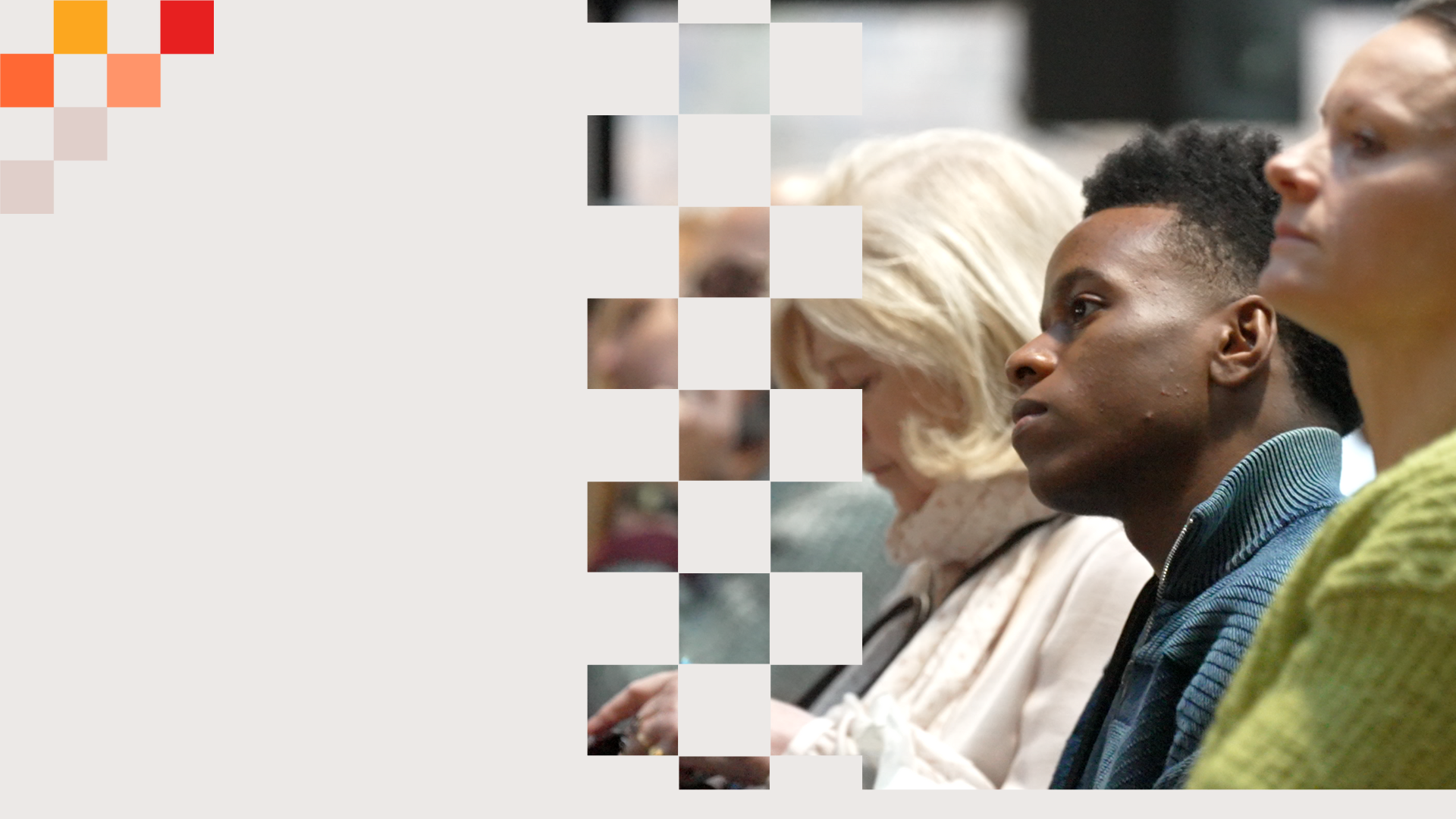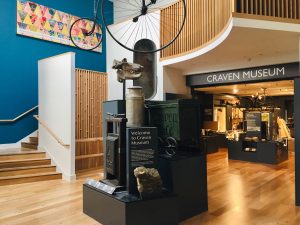
In our latest Diversity Spotlight, we talk with Catrin Podgorski, Project and Volunteer Engagement for VocalEyes’s Heritage Access 2022 report and project. VocalEyes is a registered charity that works with arts organisations across the UK to identify and remove barriers to access and inclusion for blind and partially sighted people. Heritage Access 2022 focuses on access information across the UK museums and cultural heritage sites specifically, driven by the belief that “access to cultural heritage is a human right”.
We talk to Catrin, a former NHS Partnerships Manager who co-managed a group of 300 volunteers for the vaccine programme in Camden, about how her experience in the healthcare sector has influenced her work in the Creative Industries. We also dig deeper into the Heritage Access 2022 report findings; explore why volunteers are such an invaluable part of the work; and find out what Catrin’s believes to be the organisation’s greatest achievement, so far, in breaking down barriers to heritage and empowering arts and heritage venues to be more inclusive.
Can you tell us more about Heritage Access 2022 and what drives the initiative?
Catrin: Heritage Access is a report and project that highlights the importance of quality online access information for UK museums and cultural heritage sites. Its aim is to track the changes in the state of access over the previous four years and seeks to raise digital skills and confidence across the UK heritage sector. The initiative is driven by the belief that access to cultural heritage is a human right and was delivered in partnership with Stagetext, Autism in Museums and the Centre for Accessible Environments, and funded by the National Lottery Heritage Fund
In the report Foreword by Kim Klug-Miller, Disability & Access Ambassador for Heritage in the Cabinet Office Disability Unit, she writes that “widening audiences and pursuing inclusivity should not be seen as an option for the heritage and art sectors […], it’s our moral and legal responsibility”. I think this underpins not just the Heritage Access report but also VocalEyes’ day-to-day work as well.
I think something else that now drives the project is that, obviously, a huge amount has changed in the sector in the last four years, including an accelerated move towards online and digital assets and learning. This led us to create a benchmarking system for the first time, which assigns a points value to each of the answers given in our volunteers’ research and then creates the final point system for venues across the UK. All of this is a result of six months of hard work by a team of 61 digital volunteer researchers, who were recruited from across all regions in the UK.
Most importantly, we actively sought volunteers with personal experience with access barriers. Around 75% of our volunteers identified as disabled, d/Deaf, deafened or hard of hearing, neurodivergent, blind or visually impaired. It was really important for us to work with a very diverse group of people so that we could learn about what they’ve experienced and bring that into the work we’re doing. This also played a key role in the work they did, going through a list of over 3,000 museums and cultural heritage sites in the UK and checking their online access information against our project checklist and report guidelines.

Craven Museum & Gallery, Skipton
So, it’s fair to say volunteers have been an integral part of the project?
Catrin: Yes! They were so great. I know most volunteer managers say that, but truly, they are a really, really fantastic group of people who worked incredibly hard over what was quite an intense period of time. We’re just incredibly grateful for everything they’ve done. They’re the ones that completed all the research—and it really was a huge amount of research they had to do. I think, as well, because they’re based all over the UK, we had to learn very fast about digital and remote volunteering and how you support a remote group of volunteers.
It has been a truly wonderful experience to watch their confidence and knowledge grow to a point where they were even supporting each other. So I think it’s been a great opportunity, not only for us to learn about remote volunteering, engagement and support, but also for our volunteers to learn about the different ways that you can volunteer, remotely or in-person.
What has been your greatest achievement so far in ‘breaking down barriers to heritage’?
Catrin: I would say our greatest achievement is the number of venues that have, as a result of the report, reached out to us and asked for bespoke advice on how to improve their access information. Not just their access information, but also the actual access provision on-site. We had just been looking at the information online, as opposed to what was actually provided if you were to go on-site.
Another great achievement is the work and engagement that we did with our volunteers. We completed the evaluation of the project itself through using an external evaluator, and we found that 100% of the volunteers that were interviewed and returned our feedback survey felt that their access requirements were taken into account and were met during the project. This is something that, for me, is a great achievement because we wanted to make sure that everyone felt valued and that they were treated with respect.
We wanted to make sure they were also able to walk away with improved confidence in their digital skills and in their knowledge of access requirements and different disabilities too. It has been wonderful to hear so many of our volunteers say they now have a greater understanding of different abilities and access to heritage.
How have you seen accessibility in art and culture venues change in the past few years?
Catrin: Even though we used a bigger venue list, our 2022 report found that the same proportion of museums and cultural heritage sites did not have access information. So, still today, 1 in 5 venues do not provide access information. That just shows how we’ve still got such a huge way to go in terms of engaging museums and cultural heritage sites, and empowering them to be more inclusive. We hope that the report provides a starting point for a lot of venues to look at their own information and also to actively seek out organisations that can support them in becoming more inclusive.
One thing that we did find was that, for the sites that did provide access information, the quality of their access information has definitely improved. Those venues are not just looking at physical mobility disabilities but they’re now more likely to include information for d/Deaf, deafened and hard of hearing visitors, and in some cases, neurodivergent visitors as well. It has been really positive to see that shift, even if the proportion of venues offering access information hasn’t changed. But we do still have a very long way to go.

Imperial War Museum, Duxford
What do you think needs to be addressed next in order to increase opportunities and accessibility in the sector?
Catrin: Organisations need to put more energy into learning about different disabilities. I think we are still in a sector that does tend to view disabilities as only physical impairments but as we know, disability is a really wide range of abilities and different ways that people identify. So I think that gap in information definitely needs to be addressed. One way to do this would be to engage with organisations, like VocalEyes, who work to increase access to arts and culture.
This being said, we do have to acknowledge that the sector, like many others, is underfunded and that often, people view access requirements or diversifying their access provisions to be something that is expensive or time-consuming. Plus, they don’t always have the staff, which is completely understandable. We focus on not demonising or criticising venues that don’t have every access aid under the sun because we really do recognize that some, particularly smaller venues, just don’t have the funding or the time to offer all these different things. However, you cannot exclude the 22% of the British population who identify as disabled from your venue, it is 2022 (nearly 2023) and we need to do better.
Our Heritage Access 2022 guide offers free and simple changes that can be made to easily improve online access information. We’ve got a checklist that we recommend venues look at, which offers lots of different ideas about what you can be included in access information to hopefully empower organisations to make the right changes.
Click here for more information about Heritage Access 2022
Related

